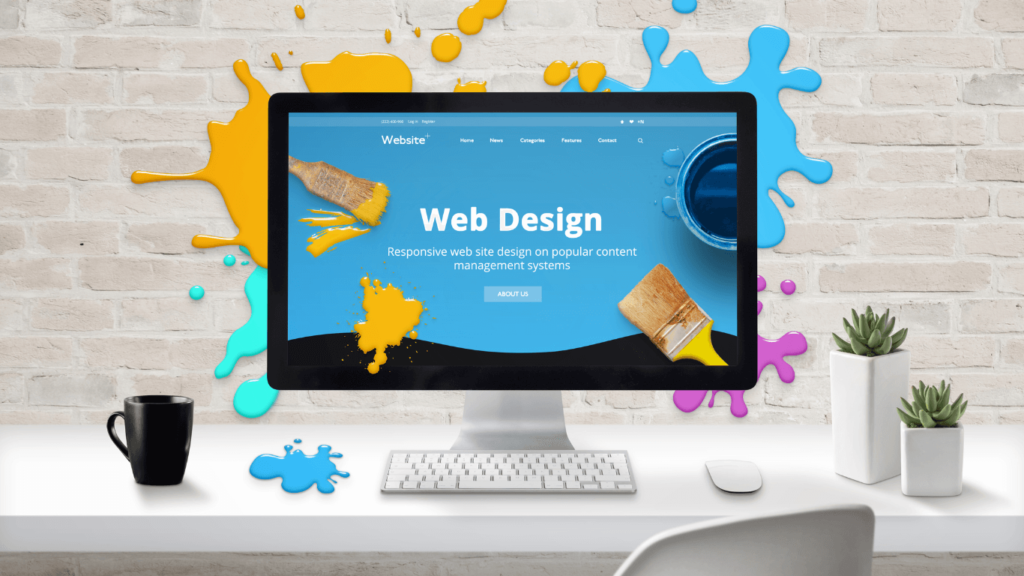In the present landscape of digital domination, web development is critical to any agency’s success. Meeting client demands for modern, responsive, visually appealing websites while maintaining efficiency and profitability is no small feat. However, there’s a game-changer in the web development arena that agencies are turning to – a platform that streamlines the entire process.
This article explores how Webflow, a versatile web design and development platform, can empower agencies to deliver outstanding results while saving time and resources. When hiring a reliable webflow agency for your web development projects, Webflow’s capabilities shine even brighter.
What Defines Cutting-Edge Web Development Practices Today?

The realm of Web Development continues to undergo transformative shifts. Understanding the defining aspects of cutting-edge practices in Web Development is pivotal in staying ahead.
Here are key elements that characterize contemporary advancements:
1. Progressive Web Apps (PWAs
Represent a hybrid of web pages and mobile applications, delivering an app-like experience while leveraging web technologies. Their responsiveness, offline functionality, and fast loading redefine user engagement.
2. Responsive and Mobile-First Design
Prioritizing mobile responsiveness is imperative. Web Development practices emphasize creating interfaces that adapt seamlessly to various devices, ensuring optimal user experiences regardless of screen size.
3. Enhanced Performance with Accelerated Mobile Pages (AMP)
AMPs focus on rapid page loading, improving the user experience on mobile devices by prioritizing content and reducing load times, which is crucial for SEO and user retention.
4. API-First Development Approach
Adopting an API-first strategy streamlines development, enabling the creation of flexible, scalable applications. It facilitates integrations across platforms and devices, fostering interoperability.
5. Focus on Web Accessibility (WCAG)
Compliance with Web Content Accessibility Guidelines ensures inclusivity. Web Development now centers on making digital content accessible to all users, irrespective of disabilities or impairments.
6. Advancements in JavaScript Frameworks
Evolving frameworks like React, Angular, and Vue.js drive modern web applications. Their versatility, performance, and component-based architecture expedite development and elevate user experiences.
7. Security-Driven Mindset (HTTPS, SSL)
With cyber threats on the rise, security remains paramount. Implementation of HTTPS, SSL certificates, and robust encryption protocols fortify websites against potential vulnerabilities.
Understanding and implementing these cutting-edge practices in Web Development not only elevates the quality of digital experiences. But also ensures relevance and competitiveness in the dynamic online sphere.
How Can Web Development Revolutionize User Experience Design?

Within the realm of digital landscapes, the evolution of Web Development stands as a catalyst for revolutionizing User Experience (UX) Design.
Here’s an exploration of how Web Development reshapes and enhances UX Design:
- Responsive Design Implementation: Web Development introduces responsive design principles, ensuring seamless user experiences across various devices. This adaptability optimizes accessibility and engagement, which is crucial for modern UX standards.
- Faster Loading Times: Through efficient coding practices and optimization techniques, Web Development enhances website speed. Reduced load times significantly impact UX, fostering user retention and satisfaction.
- Interactive User Interfaces (UI): Innovations in Web Development enable the creation of dynamic and interactive UI elements. Engaging interfaces with animations, transitions, and intuitive functionalities enhances the user experience.
- Personalization Capabilities: Utilizing technologies such as AI and machine learning, it enables personalized user experiences. Tailoring content and recommendations based on user behavior contributes to a more engaging UX.
- Improved Accessibility Standards: Web Development initiatives focus on ensuring accessibility for all users, including those with disabilities. Implementing proper coding techniques and features enhances inclusivity, enriching UX for diverse audiences.
- Data-Driven Iterations: Web Development facilitates the integration of analytics tools. Developers refine and optimize websites continuously by collecting and analyzing user data, aligning UX with evolving user preferences.
- Seamless Navigation and Information Architecture: It strategies prioritize intuitive navigation and information architecture. Clear organization and ease of navigation contribute significantly to a positive UX.
- Integration of Emerging Technologies: Advancements in Web Development integrate emerging tech like VR, AR, and voice interfaces, fostering innovative, immersive, and intuitive user experiences.
Web Development’s continuous evolution redefines UX Design by enabling adaptable, interactive, personalized, and accessible digital experiences, setting new benchmarks for user satisfaction and engagement.
Why Invest in Responsive Design for Effective Web Development?
The significance of investing in responsive design cannot be overstated. It is pivotal in ensuring a seamless user experience across various devices and screen sizes.
Here’s why incorporating responsive design is crucial for effective web development:
- Enhanced User Experience (UX): Web Development enriched with responsive design adapts effortlessly to different devices, providing users a consistent and enjoyable experience. This adaptability improves user engagement and satisfaction.
- Mobile Device Dominance: With a surge in mobile device usage, responsive design is imperative. Websites that aren’t optimized for mobile risk losing substantial traffic and potential customers.
- Improved SEO Performance: Search engines favor mobile-friendly websites. Responsive design improves SEO rankings, positively impacting visibility and organic traffic.
- Cost-Efficiency and Maintenance: Developing separate websites for different devices is costly and time-consuming. Responsive design streamlines development efforts and maintenance, reducing overall expenses.
- Faster Page Loading Speeds: Responsive websites load faster, reducing bounce rates. This speed optimization significantly influences user retention and conversion rates.
- Future-Readiness: As new devices emerge, responsive design ensures adaptability without requiring complete overhauls. It future-proofs websites, saving time and resources.
- Brand Consistency: A cohesive user experience across devices reinforces brand identity. Responsive design maintains consistency in branding elements and messaging.
- Competitive Edge: Websites prioritizing responsive design stand out in a competitive digital landscape. They attract and retain users, contributing to a competitive advantage.
Incorporating responsive design into web development is not merely an option but a necessity. It ensures a superior user experience, boosts visibility, reduces costs, and future-proofs websites, ultimately benefiting businesses and users alike.
The Future of Web Development: AI, IoT, and Beyond

Web Development stands at the threshold of a transformative era, embracing technological advancements that redefine its landscape.
Here’s a glimpse into the future of Web Development, where AI, IoT, and more will shape its evolution:
- AI Integration: Web Development is set to leverage AI algorithms for enhanced user personalization, intuitive interfaces, and predictive content delivery. AI-driven chatbots and virtual assistants will optimize user experiences, offering real-time assistance.
- IoT Integration: Integrating Web Development with the Internet of Things (IoT) will create interconnected digital ecosystems. Websites will seamlessly interact with smart devices, enabling remote control and data exchange for an immersive user experience.
- Progressive Web Apps (PWAs): It will further explore PWAs, blurring the line between websites and mobile apps. These lightweight, fast-loading applications will offer offline capabilities and native-app-like experiences.
- Voice Search and Navigation: Incorporating voice technology into Web Development will redefine how users interact with websites. Voice-activated commands for navigation and search functionalities will become more prent, enhancing accessibility and convenience.
- Blockchain Integration: As security remains a priority, it will witness increased integration of blockchain technology. Decentralized and tamper-proof ledgers will enhance data security and trust within online transactions and interactions.
- AR/VR Integration: Augmented Reality (AR) and Virtual Reality (VR) technologies will revolutionize Web Development. Immersive web experiences will transform e-commerce, education, gaming, and other industries, fostering engagement and interactivity.
- Focus on Accessibility and Inclusivity: Web Development will prioritize accessibility, ensuring websites cater to users with diverse needs. Compliance with accessibility standards and inclusive design practices will become central to development strategies.
This future outlook for Web Development showcases a landscape embracing innovation, interconnectivity, enhanced user experiences, and heightened security, promising an exciting evolution in the digital realm.
The Webflow Advantage:
It has been making waves in the web development industry for its ability to combine the best of both worlds: design and development. Here’s how it benefits agencies:
No Coding Required:
It eliminates the need for extensive coding knowledge. The designers and developers can work side by side seamlessly. Agencies can focus on creativity and design while fully controlling the website’s functionality.
Customizable Templates:
It offers a wide array of customizable templates. Agencies can start with a pre-designed template and make it their own, saving valuable time in the initial design phase. It’s a great way to kickstart projects and meet tight deadlines.
Efficient Collaboration:
Collaboration is a breeze with Webflow. Multiple team members can work on a project simultaneously, making it easy to divide tasks and meet deadlines efficiently. No more sending files back and forth or dealing with compatibility issues.
Responsive Design:
Building responsive websites is essential in today’s mobile-first world. Webflow’s responsive design features allow agencies to create stunning websites on all devices without the headache of manual coding for each screen size.
Read more: The Art and Science of Web Design
Elevating the Client Experience:
Agencies thrive on delivering exceptional experiences to their clients. It plays a pivotal role in enhancing the client-agency relationship:
Real-time Preview:
It offers a real-time preview of the website, which means clients can see the progress of their project at any time. Its transparency builds trust and allows clients to provide feedback early in development.
Easy Content Management:
Content management is made simple with its intuitive interface. Clients can easily update their website’s content without relying on the agency for every minor change. It frees up agency resources for more critical tasks.
Hosting Included:
It provides hosting services, eliminating the need for agencies to seek external hosting solutions. Its seamless integration simplifies the process and reduces the risk of compatibility issues.
Related post: Don’t Begin Custom Software Development Until You Read These Recommendations
Optimising Workflow and Profitability:
Efficiency is the cornerstone of any successful agency. It enhances workflow and profitability in several ways:
Faster Development:
With its visual design interface and pre-built elements, it speeds up the development process. Agencies can deliver projects faster, increasing their capacity to take on more clients.
Lower Maintenance Costs:
Traditional websites often require ongoing maintenance and updates. Its self-hosting and content management capabilities reduce ongoing maintenance costs, ensuring higher profitability.
Scalability:
As agencies grow, so do their website demands. It scales effortlessly, accommodating agencies of all sizes. It’s a flexible solution that grows with your business.
FAQ for Web Development
A: Web Development involves building and maintaining websites, encompassing design, coding, and functionality.
A: Proficiency in programming languages like HTML, CSS, and JavaScript and familiarity with frameworks and tools is essential.
A: Responsive design ensures websites adapt to various devices, offering optimal user experiences.
A: Web Development involves building and maintaining websites, encompassing design, coding, and functionality.
A: Proficiency in programming languages like HTML, CSS, and JavaScript and familiarity with frameworks and tools is essential.
A: Responsive design ensures websites adapt to various devices, offering optimal user experiences
A: It enhances online presence and user engagement and facilitates e-commerce and communication.
A: Online courses, coding boot camps, and resources like tutorials and documentation offer avenues for learning Web Development.
Summing it Up:
In the competitive world of web development, agencies need tools that not only make their work more accessible but also enhance the quality of their output. Webflow, with its no-code design approach, responsive capabilities, and efficient collaboration features, has emerged as a game-changer for agencies. It streamlines the web development process, elevates the client experience, and optimizes workflow and profitability. When it comes to choosing a dependable webflow agency for your web development needs, it stands out as the top choice.
Agencies that embrace Webflow are poised to stay ahead of the curve, delivering exceptional websites and exceeding client expectations. In the ever-evolving digital landscape, it is the secret weapon that allows agencies to thrive. Explore the power of Webflow and revolutionize your agency’s web development today. Your clients—and your bottom line—will thank you.

